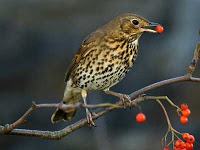Fruits all over the world vary in terms of ripening speed and color. Upon ripening, fruits can change colors apart from just becoming green. The ripening process depends on the climate, weather conditions, and the amount of sunlight a fruit receives throughout the day. Regardless, one thing is common: while they are unripe, they taste bitter, and when they ripe, they are colorful and sweet. Let us see why.
To begin with, fruit during the early stages of ripening synthesizes compounds such as tannins and alkaloids. The compounds help the fruit fight infections and cause the under-ripe fruit to taste astringent and bitter, eventually warding off potential eaters. As the fruit continues to grow, so does its cell storage, which is filled with water, sugars, organic acids, vitamins, and minerals. During this, the skin as well starts to wear different colors such as yellow, orange or red, etc. The acidic and starch contents decrease while the sugar content increases, making the fruit sweet. Furthermore, the alkaloids and tannins disappear as well.
Certain fruits continue to ripen once they have been harvested if you are wondering about that. These fruits include bananas, avocados, apricots, pears, mangoes, and kiwis, etc. Moreover, these fruits are called climacteric because they feature an important period in their development upon ripening known as increased cellular respiration. Upon reaching the final stages of maturity, these fruits retain more ethylene. Fruits that are climacteric can retain ethylene both produced by itself and from the environment.
However, non-climacteric fruits will not continue to ripen once they have been harvested. These include grapes, berries, melons, and cherries, etc. Since these fruits are not able to store sugar as starches, they do not become sweet. Therefore, it is always suggested to pick them when they are at the peak of their ripeness. In addition to that, you can speed up the ripening process of climacteric fruits as well. You can store it in a warm place and increase its cellular respiration. Furthermore, you can increase ethylene intake by wrapping it in a perforated plastic bag so that it can retain as much ethylene as possible.
The answer lies in the theory of evolution. Like all the other organisms, the primary purpose of trees and plants, too, is reproduction so that their species continues to propagate itself. Since trees and plants can’t move around for reproduction, they have to depend on animals and birds. After an animal or bird eats the fruit along with the seeds within it, naturally the seeds travel in the stomach of the animal or bird who eat the fruit. This way the seeds travel far and wide and are released away from the place they originated at. This is how trees and plants reproduce.
During the process of digestion, however, the seeds have to endure acidic digestive juices. It is necessary for the seeds to have developed strong enough protective layer on the exterior so that they don’t get dissolved in the stomach’s acids. This protective layer is not formed overnight, but take days. In fact, that is the last stage of fruit’s growth.
During this time the fruit should not be noticed by animals and birds. Hence, in order to camouflage with green leaves around them, fruits remain green in color. Their taste is also not enjoyable during this time. Only after the protective layer is formed around the seeds do fruits become colorful and attract animals and birds to eat them. They produce glucose and develop sweet taste as well as emit fragrance. All of this to attract animals and birds to eat them so that the now-ready seeds are dispersed.
In the end, there are several reasons as to why unripe fruits taste bitter and are colored green. It is overall a natural process. On one hand where it helps the fruit fight off potential eaters before they are mature, on the other, it involves the production of compounds that make it sweet and help it take on a different color.
You might also like:

